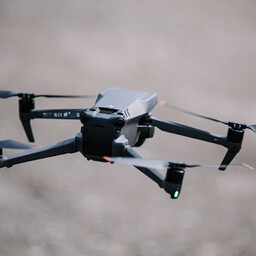Praegu on raha olemas esmase droonituvastuse loomiseks idapiiril. Plaanitud arendused viiakse lõpule 2027. aasta lõpuks, ütles Taro ERR-ile. Eesti sai Euroopa Komisjonilt üle 22,7 miljoni euro. Sellest läheb 18,3 miljonit eurot idapiiri droonimüüri ja maismaapiirile seire ehituseks. 4,5 miljonit eurot läheb Narva droonituvastuse prototüübi loomiseks.
Kokku on Euroopa Liidust ja riigi kaasrahastusest piirile eraldatud 79 miljonit eurot. Enamus rahast läheb politsei- ja piirivalveameti projektidele. Taro rõhutas, et
tehnoloogia areneb kiiresti
. Lisaks rahastatud arendustele on vaja uusi lahendusi. Rahastust tuleb pidevalt taotleda avanevatest taotlusvoorudest.
tehnoloogia areneb kiiresti
Tõlge fraasile: tehnoloogia areneb kiiresti
EN
technology is developing rapidly
Taro lisas, et tööd jätkatakse, et
droonid taevast alla tuua
. Droonimüür on oluline osa riigikaitsest. Kõik piiriga seonduv on siseministri jaoks prioriteet.
Ukraina kogemus
näitas, kui oluline on droonide avastamine ja tõrjumine. Droonimüür pole ainult tehniline arendus, vaid üleriigiline võrgustik. See on
suur investeering
, mis tasub end ära, et vältida inimohvreid.
droonid taevast alla tuua
Tõlge fraasile: droonid taevast alla tuua
EN
bring drones down from the sky
Ukraina kogemus
Tõlge fraasile: Ukraina kogemus
EN
Ukraine's experience
suur investeering
Tõlge fraasile: suur investeering
EN
major investment
Politsei- ja piirivalveameti ekspert Hanna Heier ütles, et Euroopa Liidu
rahastusest ilma jäämine
ei mõjuta projekti oluliselt. Projektiga jätkatakse, otsides
muid rahastusvõimalusi
. Droonituvastuse arendamiseks on juba kaks erinevat rahastust ja riigieelarve 2027. aasta lõpuni. Kokku on raha 17 miljonit eurot.
rahastusest ilma jäämine
Tõlge fraasile: rahastusest ilma jäämine
EN
lack of funding
muid rahastusvõimalusi
Tõlge fraasile: muid rahastusvõimalusi
EN
other funding opportunities
Droonimüüri projektiga liigutakse plaanipäraselt edasi. Praegu tehakse turu-uuringuid ja tehnilisi kirjeldusi. Sel ajal avaldatakse riigihanke tuvastusseadmete ja tõrjeseadmete soetuseks. 2026. aastal hakatakse seadmeid soetama ja paigaldama. Rahast, mis oleks tulnud Euroopa Liidust, oleks kasutatud koostööks.
Projekti eesmärk oli arendada koostööd partneritega, kes seisavad sarnaste probleemide ees. Heier ütles, et droonimüür loob droonituvastuse ja tõrjevõimekuse Eesti idapiirile ja nelja suuremasse linna: Tallinnasse, Narva, Tartusse ja Pärnusse. Esimene eesmärk on kaitsta politsei poolt valvatavaid objekte droonidest tulenevate ohtude eest. Samuti kaitstakse Eesti-Vene piiri kuritegevuse eest, näiteks salakaubavedu. Mobiilsete seadmetega tagatakse
inimeste turvalisus
ja valmidus kõrgendatud ohuga sündmuste korral, näiteks laulupidu. Politsei teeb koostööd ka kaitseväega.
inimeste turvalisus
Tõlge fraasile: inimeste turvalisus
EN
safety of people
Currently, funding is available for the initial drone detection system on the eastern border. Planned developments will be completed by the end of 2027, Taro told ERR. Estonia received over 22.7 million euros from the European Commission. Of this, 18.3 million euros will go towards building the drone wall on the eastern border and land border surveillance. 4.5 million euros will be used to create a drone detection prototype in Narva.
In total, 79 million euros have been allocated from the EU and national co-financing for the border. The majority of the funding will go to projects of the Police and Border Guard Board. Taro emphasized that technology is developing rapidly. In addition to funded developments, new solutions are needed. Funding must be continuously sought from open calls for proposals.
Taro added that the work will continue to bring down drones from the sky. The drone wall is an important part of national defense. Everything related to the border is a priority for the interior minister. The experience of Ukraine has shown how important it is to detect and counter drones. The drone wall is not just a technical development but a nationwide network. It is a major investment that will pay off to avoid human casualties.
Police and Border Guard Board expert Hanna Heier said that the lack of EU funding will not significantly affect the project. The project will continue, seeking other funding opportunities. For the development of drone detection, there are already two different funding sources and a state budget until the end of 2027. In total, there are 17 million euros available.
The drone wall project is moving forward as planned. Currently, market research and technical descriptions are being conducted. Meanwhile, a public procurement will be announced for the acquisition of detection and countermeasure devices. In 2026, the procurement and installation of the devices will begin. The funding that would have come from the EU would have been used for cooperation.
The goal of the project was to develop cooperation with partners facing similar problems. Heier said that the drone wall will create drone detection and countermeasure capabilities for Estonia's eastern border and four major cities: Tallinn, Narva, Tartu, and Pärnu. The first goal is to protect objects guarded by the police from threats arising from drones. The Estonian-Russian border will also be protected against crimes such as smuggling. Mobile devices will ensure people's safety and readiness in the event of high-risk events, such as the Song Festival. The police will also cooperate with the defense forces.

